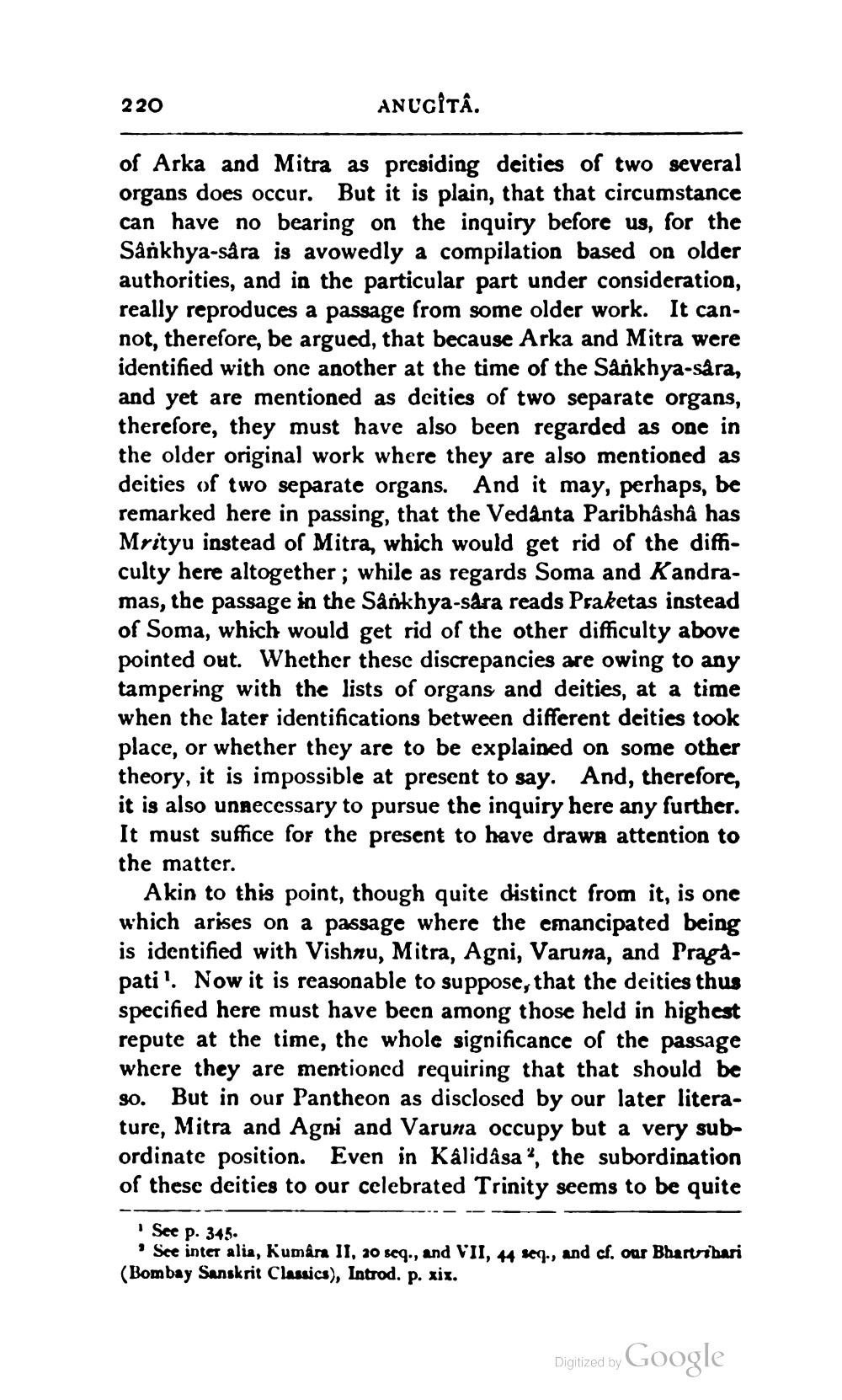________________
220
ANUGITâ.
of Arka and Mitra as presiding deities of two several organs does occur. But it is plain, that that circumstance can have no bearing on the inquiry before us, for the Sårkhya-såra is avowedly a compilation based on older authorities, and in the particular part under consideration, really reproduces a passage from some older work. It cannot, therefore, be argued, that because Arka and Mitra were identified with one another at the time of the Sankhya-sára, and yet are mentioned as deitics of two separate organs, therefore, they must have also been regarded as one in the older original work where they are also mentioned as deities of two separate organs. And it may, perhaps, be remarked here in passing, that the Vedanta Paribhâshâ has Mrityu instead of Mitra, which would get rid of the difficulty here altogether ; while as regards Soma and Kandramas, the passage in the Sankhya-sara reads Praketas instead of Soma, which would get rid of the other difficulty above pointed out. Whether these discrepancies are owing to any tampering with the lists of organs and deities, at a time when the later identifications between different deities took place, or whether they are to be explained on some other theory, it is impossible at present to say. And, therefore, it is also unnecessary to pursue the inquiry here any further. It must suffice for the present to have draws attention to the matter.
Akin to this point, though quite distinct from it, is one which arises on a passage where the emancipated being is identified with Vishnu, Mitra, Agni, Varuna, and Pragapati! Now it is reasonable to suppose, that the deities thus specified here must have been among those held in highest repute at the time, the whole significance of the passage where they are mentioned requiring that that should be so. But in our Pantheon as disclosed by our later literature, Mitra and Agni and Varuna occupy but a very subordinate position. Even in Kalidasa, the subordination of these deities to our celebrated Trinity seems to be quite
See p. 345. . See inter alia, Kumâna II, 30 seq., and VII, 44 seq., and cf. our Bhartibari (Bombay Sanskrit Classics), Introd. p. xix.
Digitized by Google




